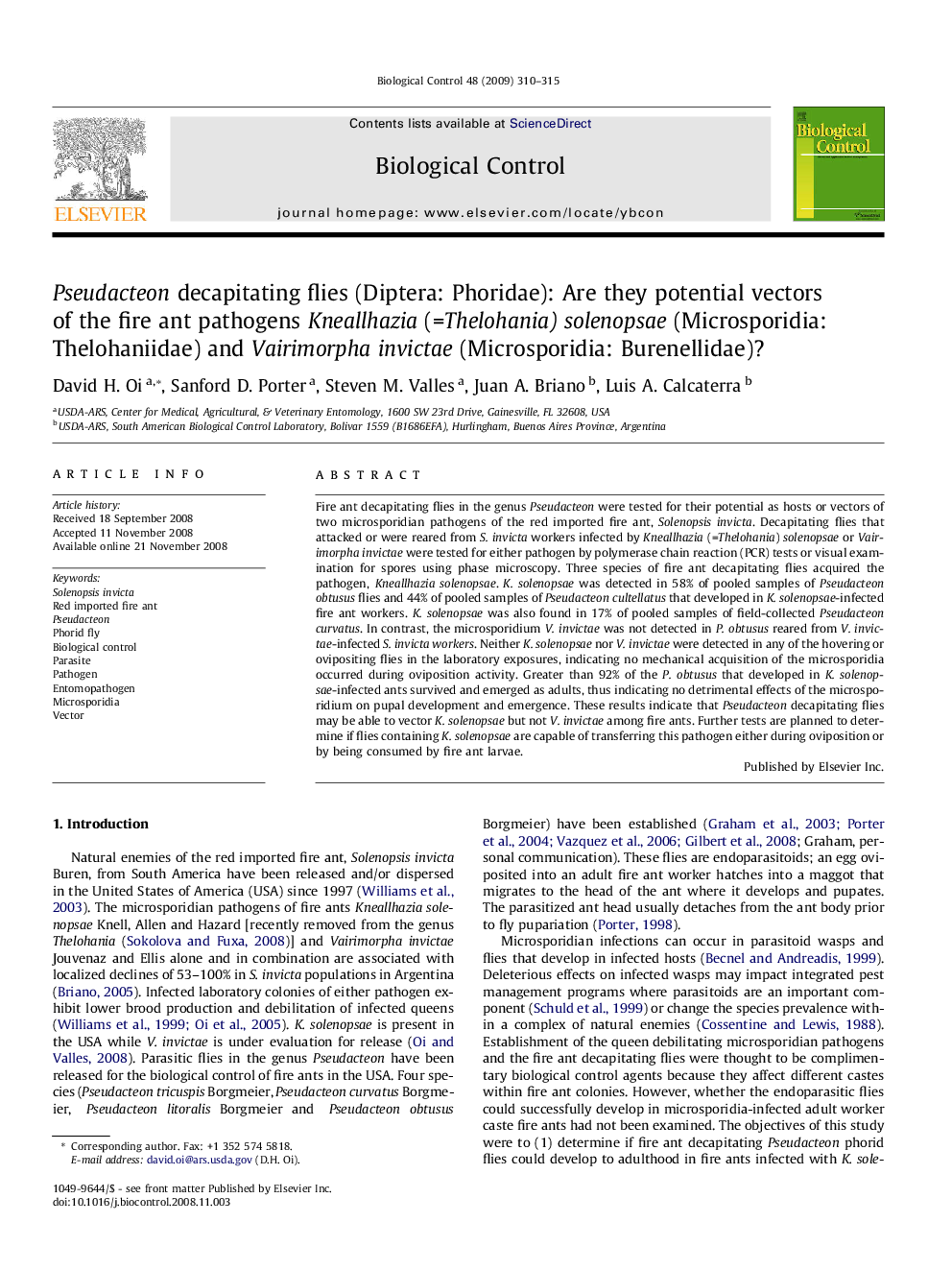| Article ID | Journal | Published Year | Pages | File Type |
|---|---|---|---|---|
| 4504756 | Biological Control | 2009 | 6 Pages |
Abstract
Fire ant decapitating flies in the genus Pseudacteon were tested for their potential as hosts or vectors of two microsporidian pathogens of the red imported fire ant, Solenopsis invicta. Decapitating flies that attacked or were reared from S. invicta workers infected by Kneallhazia (=Thelohania) solenopsae or Vairimorpha invictae were tested for either pathogen by polymerase chain reaction (PCR) tests or visual examination for spores using phase microscopy. Three species of fire ant decapitating flies acquired the pathogen, Kneallhazia solenopsae. K. solenopsae was detected in 58% of pooled samples of Pseudacteon obtusus flies and 44% of pooled samples of Pseudacteon cultellatus that developed in K. solenopsae-infected fire ant workers. K. solenopsae was also found in 17% of pooled samples of field-collected Pseudacteon curvatus. In contrast, the microsporidium V. invictae was not detected in P. obtusus reared from V. invictae-infected S. invicta workers. Neither K. solenopsae nor V. invictae were detected in any of the hovering or ovipositing flies in the laboratory exposures, indicating no mechanical acquisition of the microsporidia occurred during oviposition activity. Greater than 92% of the P. obtusus that developed in K. solenopsae-infected ants survived and emerged as adults, thus indicating no detrimental effects of the microsporidium on pupal development and emergence. These results indicate that Pseudacteon decapitating flies may be able to vector K. solenopsae but not V. invictae among fire ants. Further tests are planned to determine if flies containing K. solenopsae are capable of transferring this pathogen either during oviposition or by being consumed by fire ant larvae.
Keywords
Related Topics
Life Sciences
Agricultural and Biological Sciences
Agronomy and Crop Science
Authors
David H. Oi, Sanford D. Porter, Steven M. Valles, Juan A. Briano, Luis A. Calcaterra,
